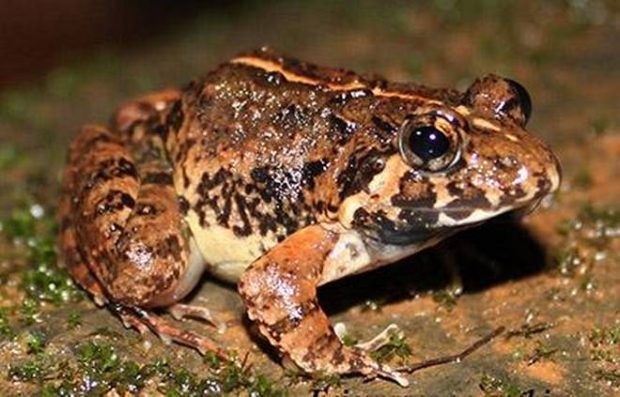Goa is teeming with all kinds of exotic flora and fauna. The hinterland areas are full of these. The Western Ghats which run along the eastern part of our tiny home-state have been internationally recognized as one of the biodiversity hotspots of the world. This is where a lot of species of birds, animals and even trees and plants can be found.
Fejervaryan frogs
The monsoons in Goa bring their own revelations. It’s a magical season in Goa and the jungles echo with the sounds of croaking during this time. Out come the frogs, from under every rock and hidey hole, hitting each muddy-watered pool on their way into the open. Their ‘ribbit’-ing can be heard for miles around from morning to night. The sound is quite calming and is usually associated with the frogs mating ritual during this season. The most common of these is the large-sized terrestrial fejervaryan frogs.
This species of terrestrial frog can mostly be found near water bodies. They serenade female frogs in the hopes of mating during the monsoon season. As we have learned in school, frogs mate in water as the survival of their species relies on the same. Frogs eggs can be found in a jelly-like substance which requires water. Once the eggs hatch, the tadpoles are born and they have gills to breathe in and out and they too can’t survive to full frog-adulthood without water.
A new species of frog leaps into discovery
The frogs found in the Western Ghats are commonly referred to as cricket frogs or fejervaryan frogs. These terrestrial frogs are scientifically classified as belonging to the amphibian genus Fejervarya of the family Dicroglossidae.
Even though this species is found all over the place, one would require an expert to identify them. For one, they come in different sizes ranging from small (19 mm) to large (56 mm). The morphological similarities also give rise to difficulties in identifying them with external characteristics. Which then leads to trouble in terms of names, identification, and systematics (the study and classification of living organisms).
The team of Dr K P Dinesh, from the Zoological Survey of India, Pune; Mr Nirmal Kulkarni of the Mhadei Research Centre, Goa; Ms Priyanka Swami of the Centre for Ecological Sciences, Indian Institute of Science, Bangalore, and Mr P Deepak of Mount Carmel College, Bangalore are the ones to give credit for this new discovery. This discovery of the new species of frog has been published in a recent edition of the Records of the Zoological Survey of India.
The Fejervarya goemchi
That’s what they are calling the new species. It’s named after the state it has been discovered in, Goa. The Fejervarya goemchi is a large frog measuring between 41.0 mm to 46.0 mm. Its peak activity in the field begins with the onset of the monsoon in June to the post-monsoon season in September.
Most fejervaryan species in South and South-east Asia are challenging to classify on the basis of morphology alone. Therefore, the authors/team members have used a combination of morphology, geographic distribution range and molecular methods to describe the new species. Additionally, they have provided an overview of the systematics of the group and recommended additional sampling across the Asian continent.
What is known of the locations preferred by the new species is that it can be found in the high altitude areas of lateritic plateaus, temporary water bodies and the paddy fields of the Goa. It is quite a prolific frog producing progeny abundantly. More detailed studies of this species, however, are necessary to map its distribution range and understand its biology.
The team led by Dr. K P Dinesh and Mr. Nirmal Kulkarni must be remembered and lauded for the discovery of the tiny fejervaryan frog, Fejervarya gomantaki in the year 2015.
With this new discovery of the Fejervarya goemchi, Mr. Nirmal Kulkarni and team have discovered five new species of amphibians in the state of Goa. These include the three caecilians (limbless amphibians) in the last decade: Gegeneophis goaensis and Gegeneophis mhadeiensis in the year 2007; Ichthyophis davidi in the year 2011; Fejervarya gomantaki in the year 2015 and Fejervarya goemchi in 2018.
Information credit – PruthaGoa/ Also see the TOI article on this discovery
ItsGoa/MAY/KDGP


